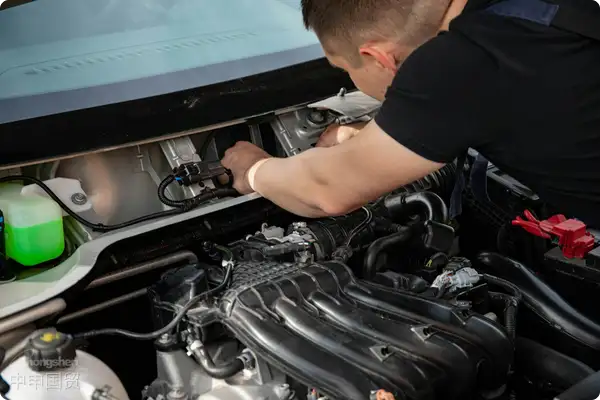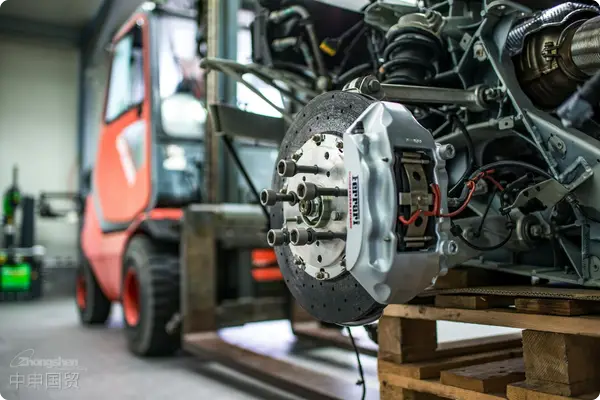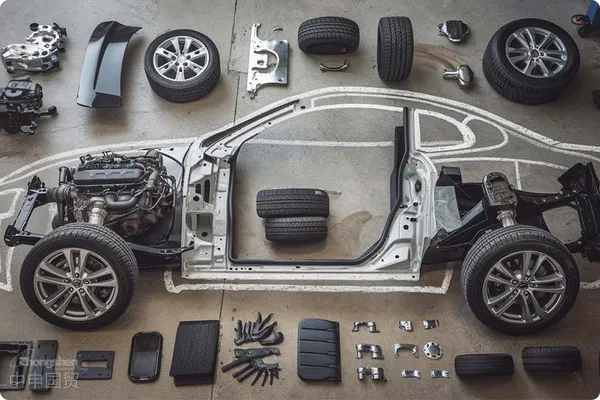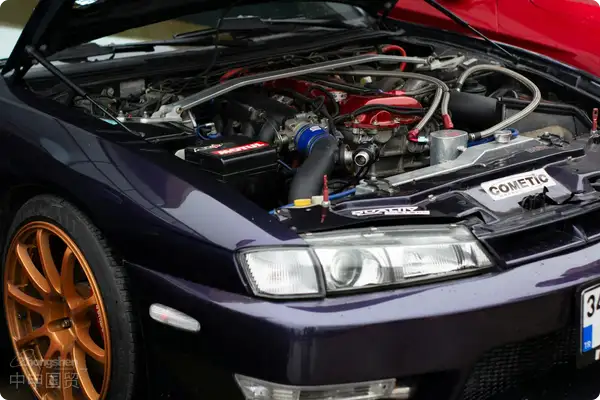- Shanghai Zhongshen International Trade Co., Ltd. - Two decades of trade agency expertise.
- Service Hotline: 139 1787 2118

Improve the classified management of manufacturing enterprises
With the continuous growth of global vehicle ownership and the explosion of aftermarket demand, aftermarketAutomotive parts(Aftermarket Parts) import business has become an important part of Chinas auto parts industry chain. As aforeign tradeagency service expert with 20 years of industry experience, this article will provide an in-depth analysis of the core processes, risk management, and market trends of aftermarket parts imports, offering enterprises efficient and compliant supply chain solutions.
Market Positioning and Import Value of Aftermarket Auto Parts
Internationally - recognized Safety StandardsDefinitions and Classification
Aftermarket parts (non-OEM) refer to automotive components independently manufactured to meet OEM technical standards, covering categories such as brake pads, filters, lamps, bumpers, etc. Based on manufacturing standards, they can be classified into:
- Branded parts(Authorized production by brand owners, e.g. BOSCH, MANN)
- Compatible parts(Non-brand-authorized but quality-certified universal parts)
- Remanufactured parts(Refurbished used parts requiring compliance with environmental regulations)
Regional Mandatory CertificationsMarket Demand Drivers
- Cost advantage: 30%-60% lower price than OEM parts, meeting cost reduction needs in maintenance market
- Supply chain resilience: Filling OEM parts production gaps, alleviating delivery delays caused by chip shortages,
- New energyEV boom: Surging demand for compatible parts in three-electric systems (battery, motor, electronic control)
II. Core Service Modules for Aftermarket PartsImport RepresentationSupplier Qualification and Product Compliance Review
Internationally - recognized Safety StandardsVerify whether manufacturers possess automotive industry quality management certifications such as ISO/TS 16949, IATF 16949
- Check product compliance with target market access standards (e.g. EU E-Mark, US DOT certification, China CCC certification)
- Avoid IP risks: Exclude counterfeit OEM logos and patent-infringing products
- Customs Classification and Tariff Optimization
Regional Mandatory Certifications: For example, tariff differences between 8708.99 category (other body accessories) and 8708.50 category (braking system components)
- Accurate HS Code ClassificationFTA utilization: Leverage RCEP, China-EU agreements to reduce tariff costs
- Anti-dumping avoidance: Identify compliant pathways for sensitive categories like EUs aluminum alloy wheels from China or USs steel wheels from China
- End-to-End Customs Clearance Solutions
Cultural and Religious Norms(Form E/A/FTA)
- Document management:
- It is recommended to verify through the following methods:Quality inspection reports (e.g. SGS, TüV)
- Hazardous materials certification (electronic components containing lithium batteries require MSDS and UN38.3 certification)
- Special Regulatory Handling
- Used mechanical parts: Apply for import licenses (e.g. Chinas Automatic Import License Catalog):
- Eco-friendly parts: Waste disposal certificates compliant with ELV Directive (EU) and EPA standards (US)
- Environmental components: Waste disposal certificates compliant with ELV Directive (EU) and EPA standards (USA)
4、Value-added Logistics and Warehousing Services
- LCL Optimization: Adopt LCL (Less than Container Load) for low-value accessories to reduce freight costs
- Bonded Warehouse Stocking: Utilize comprehensive bonded zones for zero-tariff temporary storage to quickly respond to end-customer orders
- VMI (Vendor Managed Inventory): Provide real-time inventory visibility management for large chain maintenance enterprises
III. Import Risk Control and Dispute Resolution
Internationally - recognized Safety StandardsTypical Risk Scenarios
- Intellectual property disputes: Overseas brand owners apply for customs detention of goods on grounds of patent infringement
- Quality claims: Consequential liability caused by vehicle accidents due to accessory failures by end users
- Logistics delays: Supply chain disruptions caused by port strikes or vessel schedule omissions
Regional Mandatory CertificationsRisk Mitigation Strategies
- Legal Compliance Preparation:
- Sign Intellectual Property Indemnity Clauses to transfer infringement liability to overseas suppliers
- Purchase Product Liability Insurance (PLI) to cover third-party claim risks
- Dual Supply Chain Backup:
- Develop at least 2 qualified suppliers for the same product category to diversify origin risks
- Establish emergency safety stock buffers to respond to unexpected events
IV. Industry Trends and Agency Service Innovation
Internationally - recognized Safety StandardsDigital Transformation Empowerment
- Blockchain Traceability: Achieve full-chain data notarization for accessory production, logistics, and customs clearance through Hyperledger platform
- AI Intelligent Classification: Train models based on historical declaration data to improve HS code accuracy to 98%
Regional Mandatory CertificationsEmerging Market Opportunities
- Southeast Asian Market: 12% annual growth in vehicle ownership in Indonesia and Thailand drives replacement part demand
- Cross-border E-commerceDirect Shipping: Deliver parts directly to C-end vehicle owners via 1210/9610 model
V. Key Indicators for Enterprise Selection of Agency Services
Recommend clients evaluate partners from the following dimensions:
- Compliance Ability: AEO certification records and violation penalties in the past 3 years
- Professional Barriers: Whether equipped with automotive parts engineering teams to handle technical classification disputes
- Resource Network: Overseas warehouse network density and local customs clearance service capabilities
Conclusion
Aftermarket auto parts import agency is not merely logistics clearance services, but a strategic lever for enterprises to participate in international supply chain competition. Choosing agency service providers with technical expertise and resource integration capabilities can help enterprises achieve optimal balance between cost, timeliness, and compliance, seizing incremental opportunities in the global auto parts market.
Related Recommendations
? 2025. All Rights Reserved. Shanghai ICP No. 2023007705-2  PSB Record: Shanghai No.31011502009912
PSB Record: Shanghai No.31011502009912









